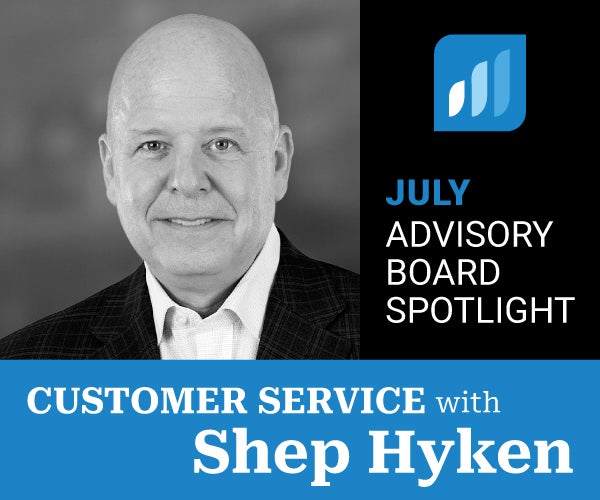Best Practice Examples: How a Gun Writer Started a Successful Business
By: Jay Chambers

A few years ago, a young gun writer—we’ll call him Josh—was making a decent bit of money writing for various firearms publications. But he had a problem:
He’d hit a bit of a wall in terms of income growth. It was difficult to increase his rates much more. And he was pretty much maxed out on working hours. This is a common hurdle in the freelancing world.
He needed better options for increasing his income without working more hours and without raising his prices. That left him with two possible routes:
- Increase his output.
- Add additional income streams.
After some deliberation, Josh decided that he could actually do both. However, it would require him to take a business approach to his gun writing.
Since he had some online presence from writing for a few publications, Josh started his own blog. As he wrote and built traffic for his blog, these are the best practices he followed to convert his writing from a job into a successful business.
Productized Service
This is the step that freelancers skip more often than any other step in building a service-based business.
Some things—like writing—are impossible to produce through automation. A person has to do the work. But, even highly customized services can be productized.
What this means is that you create a consistent, repeatable process for completing projects. There may be small variations in the process, based on the project. But, overall, each project should follow the same flow.
Here’s how to start building a process for any service:
- Map out the steps for completing a project, from the very first contact to the final wrap-up email. Write every step down.
- Group the steps into phases. There can be as many phases as you need. But, break the process up into sections like, “onboarding,” “research,” “production,” and “offboarding.”
- Create a folder structure on your computer that correlates with the phases you mapped out. Leave the folder structure unlabeled, so that you can copy it and create a new folder structure for each new project. Then, when you start a project, create an empty folder structure where you can drag and drop resources and deliverables for each project phase.
That’s it. Follow your process as closely as possible for each project. It will help you manage your work and produce more in less time. It also creates a more consistent experience for clients. That way, when you get referrals, clients get what they expect.
Monetize your assets
Once Josh had created a system and productized his gun writing, he had more time and a bit more money to invest in his blog, which was getting a fair amount of traffic.
But, that traffic was just traffic. It wasn’t worth any money, yet.
Josh decided to use two tactics to monetize his blog and create additional income streams.
Affiliate links
Using affiliate links is a good way to start monetizing your online presence, because they require very little additional money. If people are already reading your blog, email newsletter, or visiting your site, it doesn’t cost much to get the affiliate links.
Obviously, you have to insert the links tactfully, so that your audience is receptive. Also, you’re endorsing everything that you promote. Avoid promoting stuff that you wouldn’t actually use.
If this sounds like affiliate marketing, that’s because it is. The difference is that you’ve built your own platform and gathered an authentic audience, rather than just putting up a sales page and paying for traffic.
One of the nice things about affiliate links is that they work across multiple channels. If you have a blog, then decide to add a YouTube channel, you can include your affiliate links on your YouTube channel.
Tim Ferriss might be one of the most successful affiliate marketers ever. His affiliate marketing is so good that his audience complained when he experimented with removing the ads and affiliate links from his podcast and email newsletter.
Additionally, you don’t need a ton of traffic to start adding affiliate links. In fact, according to Kevin Kelly, about 1000 true fans is enough.
Our gun writer, Josh, added affiliate links to his blog first. That way, he could focus on improving his content and getting more visitors, which would increase his affiliate marketing revenue without any additional effort.
Ad space
If you have a site that gets a lot of traffic, space on your page becomes valuable for advertisers. You can earn monthly recurring revenue from displaying ads on your page.
Obviously, this isn’t for everyone. You may not want to have ads on your page, which is understandable.
But, it can be a legitimate income stream, if you’re willing to show some ads alongside your content.
Just like affiliate marketing, it’s wise to control which ads show on your page. You don’t want to show ads for anything you wouldn’t be willing to endorse. A good way to do this is to reach out to companies directly, show them your traffic numbers, and offer to sell them some ad space on your site. That way you build partnerships with brands you trust, and generate a bit of income from it.
This was the second way Josh monetized his blog, once he had enough monthly visitors to be valuable as an advertiser.
Create passive income
This is where you can really make the jump from job to business. One of the defining characteristics of running a business is having something that you create once and sell multiple times.
Not all of us are engineers or designers capable of creating physical products. And it can be expensive to outsource that stuff, even if you have an idea for creating something tangible.
However, this is the information age. And you can create information products without any engineering knowledge. The key is finding out what information you have that people are willing to pay for.
If you’ve already built an audience through a blog, a YouTube channel, an email newsletter, or even a social media account, you can just ask your followers what they’d like to learn from you. Then, create a resource that teaches them what they want.
Alternatively, you can head over a site like Skillshare and browse their courses. Look for things that you know which they don’t have a course for. Then you can create a course to fill that hole.
Almost everyone knows something that can be valuable to other people. You just have to create the resource.
In Josh’s case, he decided to ask his audience what they wanted to know. He sent out a simple email, asking for feedback on what his readers would like to learn from him. Then he created a simple online course about shooting handguns, which he offered on his site for a reasonable price.
The key to starting a business
Josh did well with his productized gun writing service. But he found that once he started to monetize his blog, he needed to take on less and less client work. And he invested more time and money into the blog, which eventually became his primary income stream.
What was the key to his move from doing a job to running a business? Simple:
Josh moved from doing something for money to selling something for money. It might seem insignificant. But that right there is the difference between being a worker and being a business owner.
A worker does things.
A business owner sells things.
So, if you’re trying to start a business, working as a freelancer, or even if you’re still on the 9 to 5 grind, you can start building a business by finding an answer to this question:
“How can I stop doing what I do, and start selling what I do?”
The answer will give you a better idea of how you can productize your service, monetize your assets, and create passive income. If you do that, you’ll have created a successful business, just like Josh, who started out as a simple writer.
2220 Views














